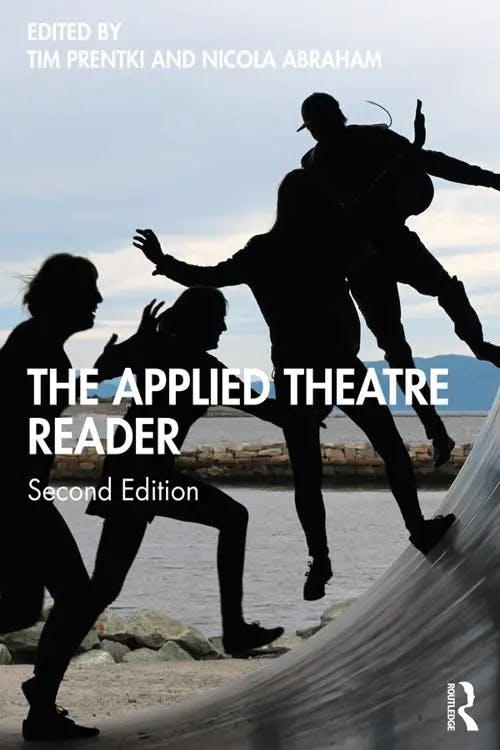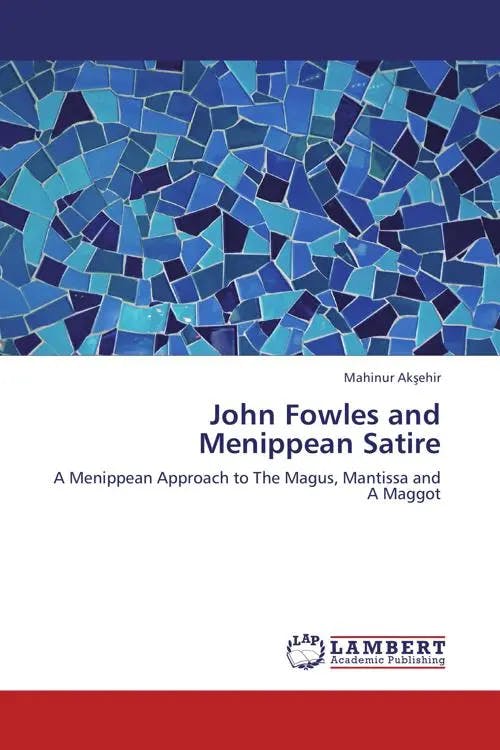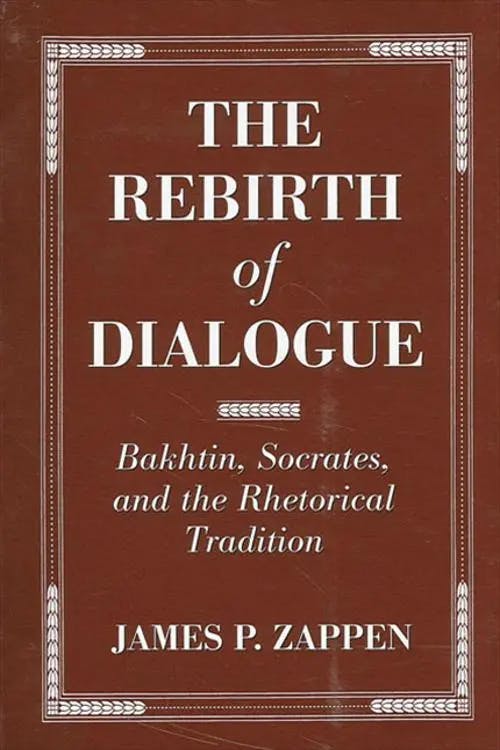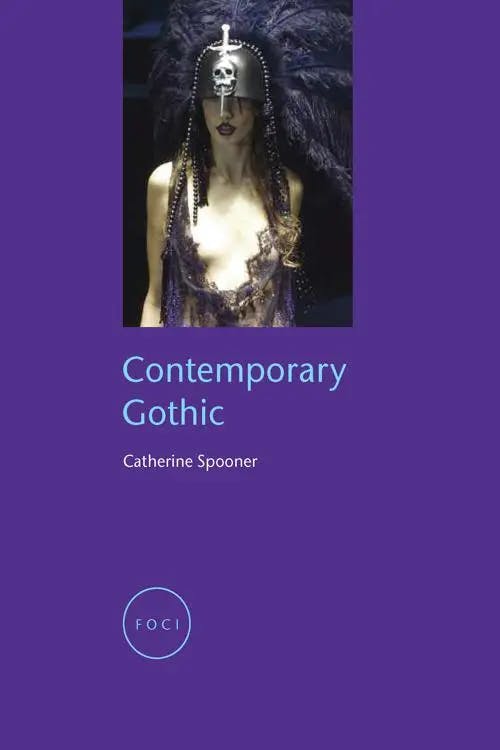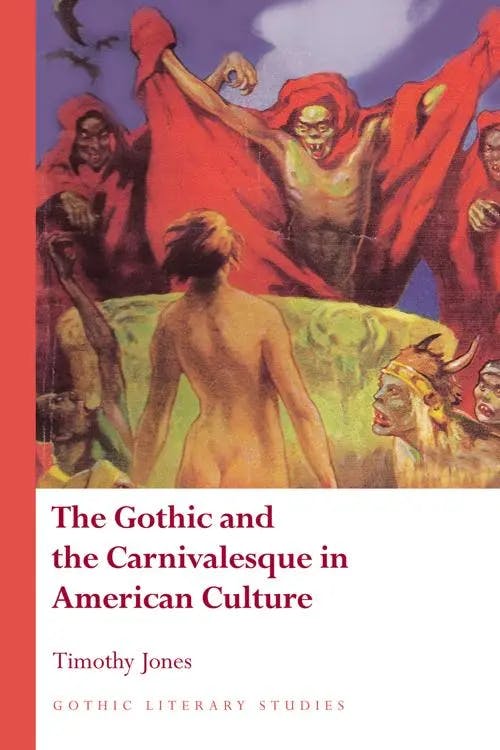What is Bakhtin's Carnivalesque?
PhD, English Literature (Lancaster University)
Date Published: 17.05.2023,
Last Updated: 19.07.2024
Share this article
Carnivalesque definition and origins
In Victor Hugo’s famous novel The Hunchback of Notre Dame (1833), the titular “hunchback,” Quasimodo, is crowned the Pope of Fools (an award for the ugliest contestant at the Feast of Fools). Quasimodo, typically derided for his physical disability and lowly status, is dressed as a Pope and celebrated by the crowd, subverting and elevating the status of the medieval fool. This subversion is emphasized in the Disney version of Hugo’s text (1996), featuring the song “Topsy Turvy” in which it is claimed that,
Once a year we turn all Paris upside down
Ev'ry man's a king and ev'ry king's a clown. (1996)
This scene typifies what literary critic Mikhail Bakhtin refers to as “carnivalesque.” The carnival, Bakhtin suggests, is a form of ritualistic spectacle which allows for traditional ideas and power structures to be suspended; we see kings become paupers and vice versa. The carnivalesque in literature also refers to any writing that overturns dominant power structures through the humor and chaos of the carnival. Bakhtin discusses the carnivalesque initially in Problems of Dostoevsky’s Poetics (1963), expanding on these ideas in Rabelais and His World (1965). While Bakhtin refers to the ritualistic spectacles that occurred in medieval Europe, he applies this to literary works in the early modern period, particularly that of François Rabelais.
In Rabelais and His World, Bakhtin writes,
In such a system the king is the clown. He is elected by all the people and is mocked by all the people. He is abused and beaten when the time of his reign is over, just as the carnival dummy of winter or of the dying year is mocked, beaten, torn to pieces, burned, or drowned even in our time. They are “gay monsters.” The clown was first disguised as a king, but once his reign had come to an end his costume was changed, “travestied,” to turn him once more into a clown. The abuse and thrashing are equivalent to a change of costume, to a metamorphosis. Abuse reveals the other, true face of the abused, it tears off his disguise and mask. It is the king’s uncrowning. (Bakhtin, excerpted in The Applied Theatre Reader, 2020)
edited by Tim Prentki & Nicola Abraham
In such a system the king is the clown. He is elected by all the people and is mocked by all the people. He is abused and beaten when the time of his reign is over, just as the carnival dummy of winter or of the dying year is mocked, beaten, torn to pieces, burned, or drowned even in our time. They are “gay monsters.” The clown was first disguised as a king, but once his reign had come to an end his costume was changed, “travestied,” to turn him once more into a clown. The abuse and thrashing are equivalent to a change of costume, to a metamorphosis. Abuse reveals the other, true face of the abused, it tears off his disguise and mask. It is the king’s uncrowning. (Bakhtin, excerpted in The Applied Theatre Reader, 2020)
Bakhtin also acknowledges that the carnival is a broad term and what we consider a carnival has changed over time. He writes that, even though some manifestations of carnival life have died out long ago, many “fundamental traits” of the carnival are still preserved in a “quite clear, though reduced, form” (1965, [2020]). Bakhtin further explains,
This permits us to use precisely the epithet “carnivalesque” in that broad sense of the word. We interpret it not only as carnival per se in its limited form but also as the varied popular-festive life of the Middle Ages and the Renaissance; all the peculiarities of this life have been preserved in carnival, while the other forms have deteriorated and vanished. (1965, [2020])
Bakhtin explains that popular forms of festival maintain the essence of carnival, such as the French charivari: a folk custom for “bridal mockery (if the marriage for some reason or other was not considered normal)” (1965, [2020]). As Bakhtin explains, the charivari still continues in a diminished form, with people playing “cat-music” (loud, obnoxious singing and yelling) under the windows of newlyweds (1965, [2020]).
We can also see the carnivalesque continue in other forms. Valentine’s Day, for example, began as a Christian feast day to a martyred saint; while we no longer acknowledge the religious significance of this holiday, we still indulge in its celebratory, ritualistic aspects. In addition, private family occasions such as christenings and memorials maintain elements of the carnivalesque as they “are all related to time, which is the true hero of every feast, uncrowning the old and crowning the new” (Bakhtin, 1965, [2020]). In other words, these occasions associated with renewal and rebirth retain their connection to ritualistic festivity through the celebration and acknowledgement of the brevity of life. This crowning in these events, much like in the Feast of Fools, is temporary, with all participants returning to their everyday lives following the celebration.
Bakhtin identifies four principal categories of the carnival sense of the world: the familiar, the carnivalistic mésalliance, the eccentric, and profanation.
- Familiar and free interaction between people: the carnival brings together people from different classes and everyone is allowed to partake regardless of status or class. This encourages people to interact with strangers who, due to socio-hierarchical divides, would likely have never met or communicated with each other.
- Eccentricity: everyone in the carnival is able to, and often encouraged to, behave in a way that transgresses normal social rules. Dressing in costumes, wearing masks, and performing in a strange manner all become accepted during the carnival as people are able to express themselves any way they please.
- Carnivalistic mésalliances: the carnival allows for dualisms typically separated, such as the sacred and the profane, high and low, educated and uneducated, to unite.
- Profanation: respect for piety is suspended and those who hold sacred offices are temporarily stripped of their power. The carnival allows for blasphemy, obscenity, and a celebration of the earthly and bodied, rather than celebrations of heavenly deities.
Carnivalized literature
In Problems of Dostoevsky’s Poetics, Bakhtin outlines how seriocomic genres constitute a form of what he refers to as “carnivalized literature.” Unlike more serious and elevated genres such as tragedies, epics, and lyrical poems, seriocomic forms were more experimental with subject and form, displaying sometimes a cynical attitude towards traditional literary modes. Bakhtin explains,
Characteristic of these genres are a multi-toned narration, the mixing of high and low, serious and comic; they make wide use of inserted genres — letters, found manuscripts, retold dialogues, parodies on the high genres, parodically reinterpreted citations; in some of them we observe a mixing of prosaic and poetic speech, living dialects and jargons […] are introduced, and various authorial masks make their appearance. (1963)
The overturning of and seeming irreverence to order sees the spirit of carnival preserved in the western literary form. This transportation of the aspects of carnival into literature is known as “carnivalization.” Two of the main forms of seriocomic genres are Menippean satire and Socratic dialogue.
Menippean satire contains many examples of juxtaposition and oxymorons. As Mahinur Akşehir writes,
Menippean satire has two basic characteristics, namely, the cynical nature of the genre and the carnival spirit it employs. The cynical rejection of absolutes, the testing and parodying of the universals in a comical and a confusing manner is the main objective of the genre. This first objective is supported by the formal, carnivalizing traits of the tradition such as meddling, transgeneric and dialogic/multi-voiced attitude, digressive narrative structure, fantasticality, rejection of hierarchies, and an inventive and inclusive manner. (2012)
Mahinur Akşehir
Menippean satire has two basic characteristics, namely, the cynical nature of the genre and the carnival spirit it employs. The cynical rejection of absolutes, the testing and parodying of the universals in a comical and a confusing manner is the main objective of the genre. This first objective is supported by the formal, carnivalizing traits of the tradition such as meddling, transgeneric and dialogic/multi-voiced attitude, digressive narrative structure, fantasticality, rejection of hierarchies, and an inventive and inclusive manner. (2012)
Literary critic Northrop Frye in Anatomy of Criticism (2020) further remarks that this type of satire mocks ideologies and “mental attitudes” rather than specific individuals and provides Jonathan Swift’s Gulliver’s Travels (1726) as a prime example of Menippean satire.
The second type of seriocomic, Socratic dialogue, originated from the conversations between philosopher Socrates and his student Plato. Socratic dialogue is a literary form (either narrative or drama) in which dialogues between characters attempt to get to the root of philosophical problems, often concerning the nature of truth and the human condition.
As James P. Zappen explains,
Bakhtin finds in [seriocomic] genres an alternative to the dogmatism and one-sided seriousness of the rhetorical tradition. He insists that the Socratic dialogue is not a rhetorical genre but a carnivalistic genre, like the other serio-comical genres in its carnival atmosphere but perhaps more serious than comical in its concern with the dialogic nature of truth and human thinking about the truth. (2012)
James P. Zappen
Bakhtin finds in [seriocomic] genres an alternative to the dogmatism and one-sided seriousness of the rhetorical tradition. He insists that the Socratic dialogue is not a rhetorical genre but a carnivalistic genre, like the other serio-comical genres in its carnival atmosphere but perhaps more serious than comical in its concern with the dialogic nature of truth and human thinking about the truth. (2012)
Both Menippean satire and Socratic dialogue reject universalism, seeking alternatives to dogmatism and absolute truth, pondering alternative ideas.
The grotesque
The grotesque was present in art and architecture long before the term was used by Bakhtin. Grotesque, in this earlier sense, was used to describe imagery based on caricatures with distorted faces — for example, the type of imagery shown on gargoyles.
For Bakhtin, the grotesque is closely associated with the carnival and its attendees. The grotesque body, in direct contrast to the idealized body, is one which transforms as we go through the life cycle. Aging, overindulgence in drink and food, puberty, and promiscuity combine to form the grotesque body. In the carnival, all bodies from all groups are celebrated due to the unifying nature of carnival and the celebration of what is usually deemed taboo or unappealing.
Bakhtin writes in the chapter of Rabelais and His World that the grotesque body is a “body in the act of becoming. It is never finished, never completed; it is continually built, created, and builds and creates another body” (cited in Bakhtinian Thought, [2003]). In particular, the proportionality of the body can make it grotesque such as “bulging eyes” or an oversized mouth which reduces the rest of the individual’s facial features to “a frame encasing this wide-open bodily abyss” (cited in Bakhtinian Thought, 2003]). This gaping mouth Bakhtin relates to images of feasting as well as a symbol of death and destruction.
The grotesque body represents both a fear of death and the decaying or altering body, and a celebration of life. As Catherine Spooner explains,
Within the limited space of the Carnival festivities, the raucous bodily humour associated with the grotesque may temporarily disrupt or overturn conventional hierarchies of power, so that, for instance, the effigy of the pope may be shown with enlarged genitals or a bare behind. The carnivalesque body is therefore associated with the voice of the underclass, and as such is considered to have subversive potential by many critics. (2007)
Catherine Spooner
Within the limited space of the Carnival festivities, the raucous bodily humour associated with the grotesque may temporarily disrupt or overturn conventional hierarchies of power, so that, for instance, the effigy of the pope may be shown with enlarged genitals or a bare behind. The carnivalesque body is therefore associated with the voice of the underclass, and as such is considered to have subversive potential by many critics. (2007)
The grotesque body can be found in the subgenre Bakhtin labels as “grotesque realism” (1965, [2020]). Grotesque realism in literature focuses on the corporeal nature of the body, and its ability to decay and transform, often as a way of presenting an erosion of a character’s morality and humanity.
However, as the Romantic grotesque emerges in the nineteenth century, the form dispenses with the humor of the medieval and Renaissance grotesque and replaces it with something more terrifying and sinister. The grotesque body, as a result, becomes a site of horror and abjection. As such, the grotesque body has been invoked by Gothic writers and artists, playing on these carnivalesque terrors. We can see Bahktin’s description of the grotesque in Stephen King’s novel It (1986) and its recent film versions in 2017 and 2019. In both the novel and the adaptations, the clown Pennywise horrifically unhinges its jaw, reminiscent of the abyss Bahktin describes.
Gothic literature and film abound with representations of the grotesque body. For example, the abject, excessive body is often rendered through offensive depictions of fatness, such as the obese monsters in video games such as Little Nightmares (2017); equally offensively, overweight victims in horror are also presented as monstrous, such as in Seven (Fincher, 1995). Recent research, such as Niall Richardson’s “Feed: A Representation of Feederism or Fatsploitation?” (in Transgression in Anglo-American Cinema, 2016), has sought to dismantle these fat-phobic tropes.
However, as Spooner points out, contemporary Gothic has seen a return of the original spirit of carnival and, with it, “freakish heroes and heroines” and “celebration of bodily excess” (2007). We can see this in the celebration of the grotesque body in, for example, Angela Carter’s Nights at the Circus (1984).
The Gothic carnival
The traces of Bakhtin’s work on the carnivalesque are present not only in Gothic depictions of the grotesque but also in many forms within the Gothic mode. Spooner uses the term “Gothic-Carnivalesque” to describe texts in which “the sinister is continually shading into the comic and vice versa” (2007). However, Spooner goes on to state,
these texts exhibit a crucial difference from both the Carnival tradition as Bakhtin describes it, and from much of the Gothic tradition too. Combining a wholly modern notion of the individual subject with the openness to the other found within the carnivalesque, one of the most prominent features of the new ‘Gothic-Carnivalesque’ is sympathy for the monster. (2007)
Critic Timothy Jones has further explored the “carnival Gothic” in The Gothic and the Carnivalesque in American Culture (2015). Jones suggests that the presentation of the carnival is linked not only to Gothic texts, but also to the experience of consuming Gothic media, particularly horror cinema. He writes,
As anyone who has watched a horror film in a full cinema knows, when frightful action is presented, sometimes the audience appears to be scared – gasping, shrieking, quietly tense — but just as often, there is laughter, incredulity and even derision expressed. This is not breaking faith with the spirit of the performance or film: it is instead characteristic of how we engage with horror narrative. (2015)
Timothy Jones
As anyone who has watched a horror film in a full cinema knows, when frightful action is presented, sometimes the audience appears to be scared – gasping, shrieking, quietly tense — but just as often, there is laughter, incredulity and even derision expressed. This is not breaking faith with the spirit of the performance or film: it is instead characteristic of how we engage with horror narrative. (2015)
Jones further expands on Bakhtin’s ideas:
Bakhtin seems to see the carnival as a moment of genuine topsy-turvy and even lawlessness. This might describe the carnival’s myth of itself, but in truth the carnival is a limited period of altered behaviours rather than a genuinely chaotic eruption. The carnival’s participants understand the practical strategies of the carnival and know its limits. The contortions of taste and moral sense the genre requires are limited only to the period in which readers are engaging with the text. (2015)
When things fall too far outside the realm of morality, becoming “too horrible to entertain,” the audience/participant recognizes them as real and the experience of the Gothic carnival ends. Jones explains that the works of H. P. Lovecraft, Robert E. Howard, and Clark Ashton Smith, published in the American magazine Weird Tales, are examples of uninterrupted Gothic carnival. In the 1930s, these writers embodied the Gothic carnival by,
embracing purposefully flat characters to free their readers from unwanted sympathies, and presenting transvalued sets of ethics and aesthetics, so that wickedness and horror are made to seem more appealing than propriety and pleasantness. (2015)
While Jones acknowledges these writers did include historical material (such as America’s colonialist history), these events were detached from substantial critique and political significance. Ultimately, Gothic carnival detracts from the real (including its horrors) to focus on the “playful pleasures of horror” (Jones, 2015); it delights in the immediate over the reflective, the immersive over the distant.
Reframing and rethinking Bakhtin’s carnival
One of the major criticisms of Bakhtin’s view of the carnival is how it operates as an authorized form of social control. Roger Sales points out that the carnival did not necessarily work to undermine authority for two main reasons. He writes,
First of all, it was licensed or sanctioned by the authorities themselves. They removed the stopper to stop the bottle being smashed altogether. The release of emotions and grievances made them easier to police in the long term. Second, although the world might appear to be turned upside down during the carnival season, the fact that kings and queens were chosen and crowned actually reaffirmed the status quo. (1983, [2023])
Roger Sales
First of all, it was licensed or sanctioned by the authorities themselves. They removed the stopper to stop the bottle being smashed altogether. The release of emotions and grievances made them easier to police in the long term. Second, although the world might appear to be turned upside down during the carnival season, the fact that kings and queens were chosen and crowned actually reaffirmed the status quo. (1983, [2023])
In Domination and the Arts of Resistance (2008), John Scott highlights that Bakhtin’s view of the function of the carnival is misleading and “risks confusing the intentions of elites with the results they are able to achieve.” Scott argues Bakhtin’s theory is both essentialist and functionalist — essentialist because a “complex social event such as carnival cannot be said to be simply this or that as if it had a given, genetically programed, function” and functionalist because it “ascribes a unique agency to elites” (2008). Scott expands, stating that,
It is surely not accurate to proceed as if carnival were set up exclusively by dominant groups to allow subordinate groups to play at rebellion lest they resort to the real thing. The existence and the evolving form of carnival have been the outcome of social conflict, not the unilateral creation of elites. (2008)
James C. Scott
It is surely not accurate to proceed as if carnival were set up exclusively by dominant groups to allow subordinate groups to play at rebellion lest they resort to the real thing. The existence and the evolving form of carnival have been the outcome of social conflict, not the unilateral creation of elites. (2008)
For Scott, the assumption that a “ritual modeling should necessarily diminish the likelihood of actual revolt” is fallacious; carnivals sometimes turned into rebellions, and resistance groups often used the imagery and symbolism of the carnival (2008).
Though these critics may diverge from Bakhtin in relation to the carnival’s safety-valve mechanism, the influence of his writings on the carnivalesque cannot be understated and has reached into other areas of scholarship, including Marxism and abjection theory.
As many carnival traditions diminish across the world, we may be left wondering whether there is a place for Bakhtin’s work on the carnivalesque in the modern world. Many scholars believe the carnival does continue across the world in different cultures, though it manifests in a different form. As Peter Stallybrass and Allon White explain in The Politics and Poetics of Transgression, the carnival became subject to “fragmentation; marginalization; sublimation; and repression” (1986). Stallybrass and White further state,
Bakhtin is right to suggest that post-romantic culture is, to a considerable extent, subjectivized and interiorized and on this account frequently related to private terrors, isolation and insanity rather than to robust kinds of social celebration and critique. Bakhtin however does not give us a convincing explanation of this sublimation of carnival. (1986)
The rest of their work focuses on accounting for this sublimation and where we see the carnivalesque now (namely at markets and fairs). Moreover, the aforementioned work of Timothy Jones and Catherine Spooner reveals a continued scholarly interest in the carnivalesque and its application to Gothic studies.
Moving beyond the Gothic’s preoccupation with the carnivalesque (and its sinister overtures), we see the carnivalesque studied in other areas. Mike Presdee, in Cultural Criminology and the Carnival of Crime (2003), explores crime, antisocial behavior on the internet, and humiliation in popular culture (such as on dating shows) through a Bakhtinian lens. Scholars have also approached socio-political via the carnivalesque, such as in Julie Billaud’s Kabul Carnival (2015) which examines how emancipation projects for Afghan women have resulted in disorientating and contradictory effects that evoke the carnival. Bakhtin’s theory of the carnivalesque, initially a literary mode, has moved across disciplines, providing insight into literary works and cultures across the world from the early modern period to the modern day.
Further reading & resources on Perlego
The Bakhtinian Carnival Spirit in Shakespeare's Three Comedies (2016) by Nigar Şen Shakirov
Carnivalizing Difference: Bakhtin and the Other (2013) edited by Peter I. Barta, Paul Allen Miller, Charles Platter & David Shepherd
The King and Commoner Tradition: Carnivalesque Politics in Medieval and Early Modern Literature (2018) by Mark Truesdale
Public Performances: Studies in the Carnivalesque and Ritualesque (2017) by Jack Santino
What is Bakhtin's carnivalesque in simple terms?
What is the grotesque body in simple terms?
What is an example of carnivalesque literature?
Bibliography
Akşehir, M. (2012) John Fowles and Menippean Satire: A Menippean Approach to The Magus, Mantissa and A Maggot. Lambert Academic Press. Available at:
Bakhtin, M. (1963, [1984]) Problems of Dostoevsky’s Poetics, translated by Caryl Emerson University of Minnesota Press. Available at:
https://www.upress.umn.edu/book-division/books/problems-of-dostoevskyas-poetics
Bakhtin, M. (1965, [2020]) “Rabelais and his world” from Rabelais and His World, translated by H. Iswolsky, in T. Prentki and N. Abraham (eds.) The Applied Theatre Reader. Routledge. Available at:
https://www.perlego.com/book/2194179/the-applied-theatre-reader-pdf
Bakhtin, M. (1965, [2003]) “The grotesque image of the body and its sources” from Rabelais and His World, translated by H. Iswolsky, in S. Dentith (ed.) Bakhtinian thought: an introductory reader. Routledge. Available at:
https://www.perlego.com/book/1618162/bakhtinian-thought-pdf
Billaud, J. (2015) Kabul Carnival: Gender Politics in Postwar Afghanistan. University of Pennsylvania Press. Available at:
https://www.perlego.com/book/732213/kabul-carnival-gender-politics-in-postwar-afghanistan-pdf
Carter, A. (1984) Nights at the Circus. Penguin. Available at:
https://www.penguin.co.uk/books/356166/nights-at-the-circus-by-carter-angela/9780099388616
Frye, N. (2020) Anatomy of Criticism: Four Essays. Princeton University Press. Available at:
https://www.perlego.com/book/1258206/anatomy-of-criticism-four-essays-pdf
The Hunchback of Notre Dame (1996) Directed by Gary Trousdale and Kirk Wise. Disney. Available on Disney+
Hugo, Victor. (1833, [2014]) The Hunchback of Notre Dame. Harper Perennial Classics. Available at: https://www.perlego.com/book/602187/the-hunchback-of-notre-dame-pdf
Jones, T. (2015) The Gothic and the Carnivalesque in American Culture. University of Wales Press. Available at:
https://www.perlego.com/book/573166/the-gothic-and-the-carnivalesque-in-american-culture-pdf
King, S. (1986, [2023]) It. Hodder and Stoughton. Available at:
https://www.hodder.co.uk/titles/stephen-king-3/it/9781444707861/
Presdee, M. (2003) Cultural Criminology and the Carnival of Crime. Routledge. Available at:
https://www.perlego.com/book/1620007/cultural-criminology-and-the-carnival-of-crime-pdf
Richardson, N. (2016) “Feed: A Representation of Feederism or Fatsploitation?” in J. Gwynne (ed.) Transgression in Anglo-American Cinema: Gender, Sex, and the Deviant Body. Wallflower Press. Available at:
Scott, J. (2008) Domination and the Arts of Resistance: Hidden Transcripts. Yale University Press. Available at:
https://www.perlego.com/book/1089328/domination-and-the-arts-of-resistance-hidden-transcripts-pdf
Spooner, C. (2007) Contemporary Gothic. Reaktion Books. Available at:
https://www.perlego.com/book/2855383/contemporary-gothic-pdf
Swift, J. (1726, [2010]) Gulliver’s Travels. William Collins. Available at:
https://www.perlego.com/book/669647/gullivers-travels-pdf
Zappen, J. P. (2012) The Rebirth of Dialogue: Bakhtin, Socrates, and the Rhetorical Tradition. SUNY Press. Available at:
PhD, English Literature (Lancaster University)
Sophie Raine has a PhD from Lancaster University. Her work focuses on penny dreadfuls and urban spaces. Her previous publications have been featured in VPFA (2019; 2022) and the Palgrave Handbook for Steam Age Gothic (2021) and her co-edited collection Penny Dreadfuls and the Gothic was released in 2023 with University of Wales Press.

